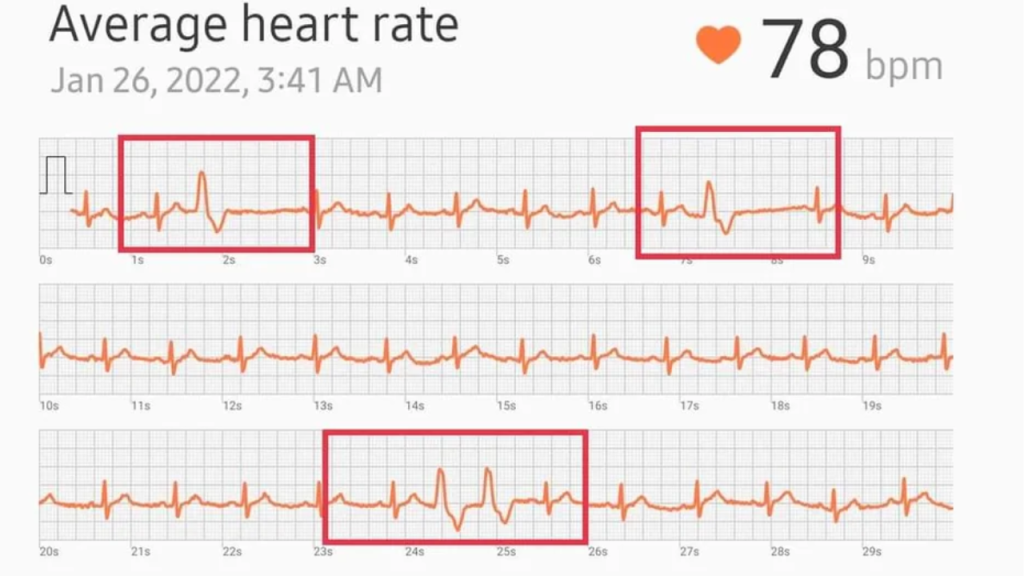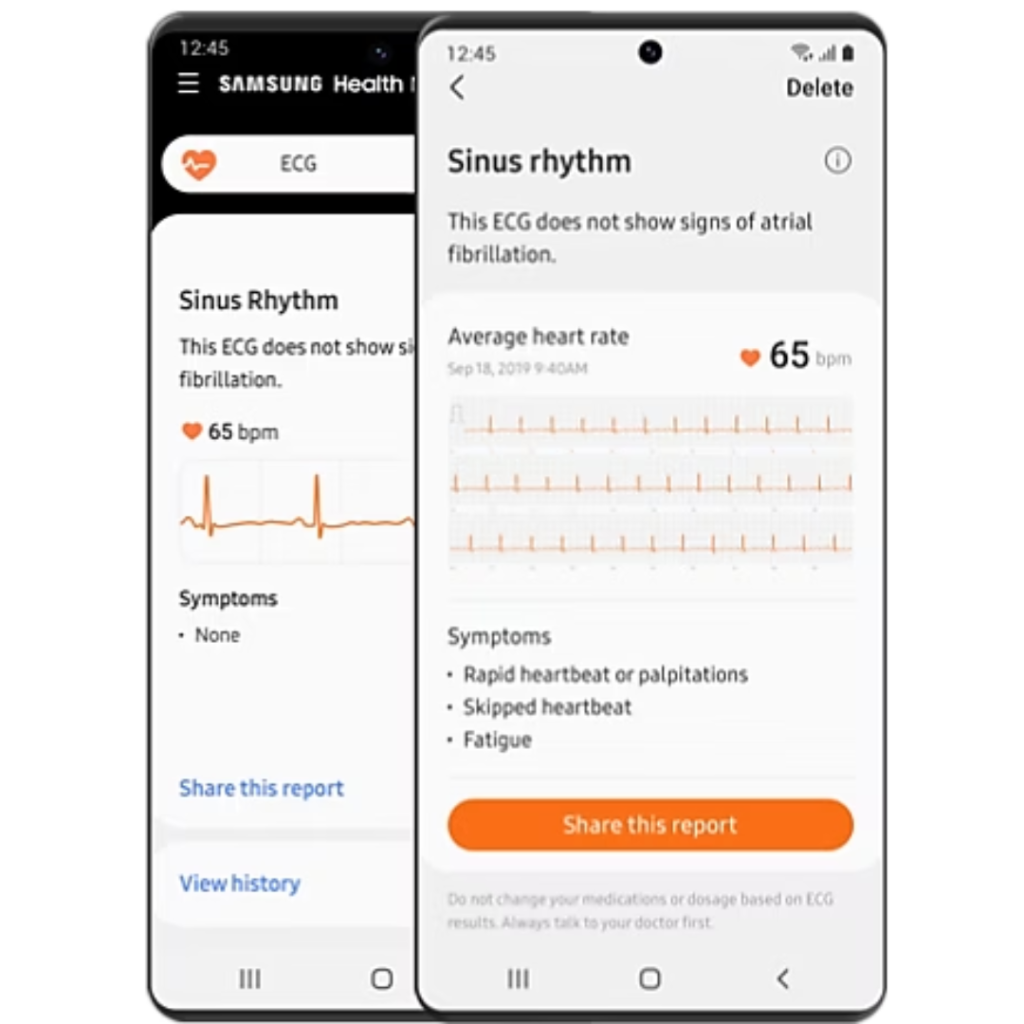Woman’s Galaxy Watch Detects Heart Issue Before Doctors Do
A woman was recently in the hospital, and one day, the patient noticed that every time she rolled onto their her side, the heart monitor techs would call them asking what was going on.
It seemed that their heart was doing something strange. After a few attempts, they realized that when she rolled onto her right side, there were no issues.

The patient decided to take matters into her own hands and downloaded the Samsung Health Monitor app to her Samsung Galaxy Watch.
She was able to record her heart rhythm and show it to her doctor. But the doctor dismissed what she saw. The patient was determined to prove their point and kept recording their heart rhythm until she was able to show the doctor the PVCs on the smartwatch app.
The doctor finally realized that the patient might be onto something and requested an ECG. After the ECG was done, it was discovered that the PICC line had been placed too deep and was irritating the heart, causing the PVCs. The doctor had the PICC line pulled back a few centimeters and the PVCs stopped.
The patient was relieved that their issue had been resolved, but was still frustrated that the doctor had not taken them seriously in the first place.
How do you access charts like this in the Samsung Health Monitor app?

To access charts like this in the Samsung Health Monitor app, open the app and go down to the ECG setting and click on it.
Note that the app is only available in certain countries and only if you are 21 years or older with your Samsung account.
What is the PICC line used for?
PICC stands for “peripherally inserted central catheter.” It is a long, thin tube that is inserted through a peripheral vein in the arm and threaded through to a larger vein near the heart.
A PICC line is used to provide long-term access to the bloodstream for medications, nutrition, fluids, and blood products.
PICC lines are commonly used for patients who require frequent or long-term intravenous (IV) therapy, such as those undergoing chemotherapy, receiving total parenteral nutrition (TPN), or receiving antibiotics for extended periods of time. PICC lines can also be used for patients who have difficult peripheral venous access or require frequent blood draws.
Unlike other types of central venous catheters, such as central lines or ports, PICC lines can be inserted at the bedside without the need for general anesthesia or surgery. They are also less prone to complications such as infection and clotting than other types of central lines.
What are PVCS?
PVCs stands for “premature ventricular contractions”. PVCs are a type of abnormal heart rhythm (arrhythmia) that occurs when the ventricles (lower chambers of the heart) contract earlier than they should, interrupting the normal rhythm of the heart.
PVCs can occur in people with healthy hearts and are generally considered benign. However, they can also occur in people with underlying heart conditions, such as coronary artery disease, heart failure, or cardiomyopathy. In these cases, PVCs may be a sign of a more serious heart problem and may require further evaluation and treatment.
Symptoms of PVCs can include palpitations (a sensation of skipped or irregular heartbeats), chest discomfort, lightheadedness, or dizziness. Treatment for PVCs depends on the underlying cause and the severity of symptoms. In some cases, no treatment is necessary. However, if PVCs are causing significant symptoms or if they are associated with an underlying heart condition, treatment may include medications or procedures to control the heart rhythm.